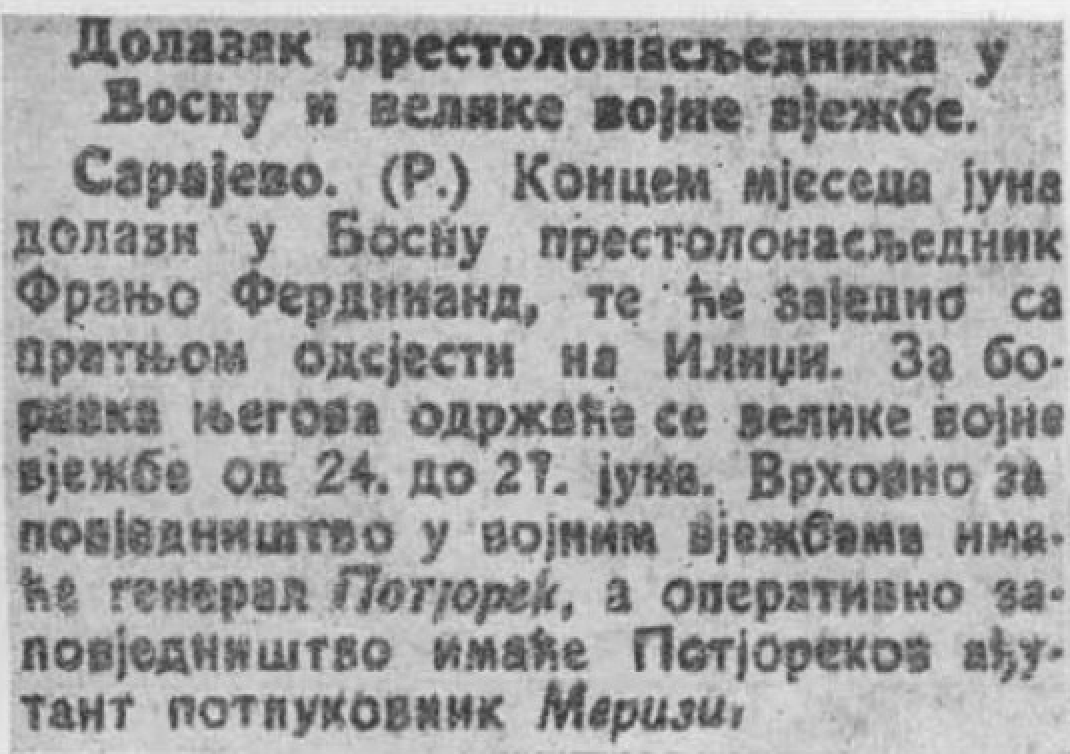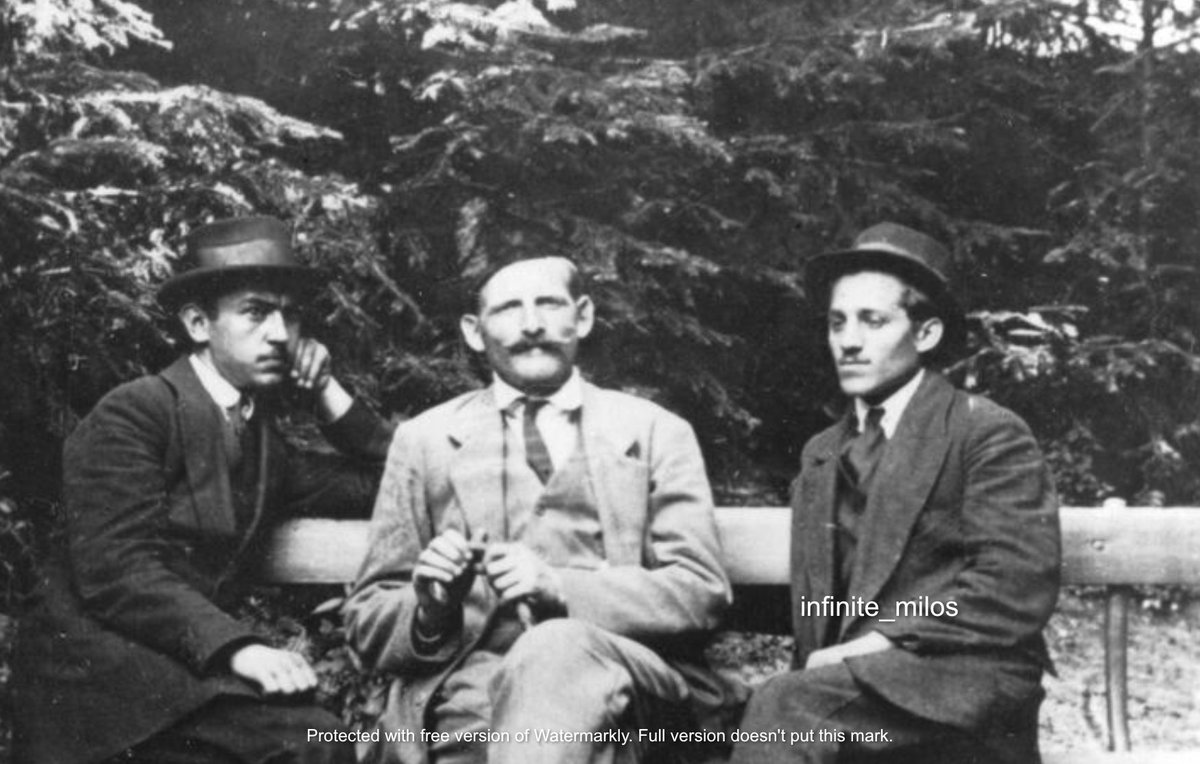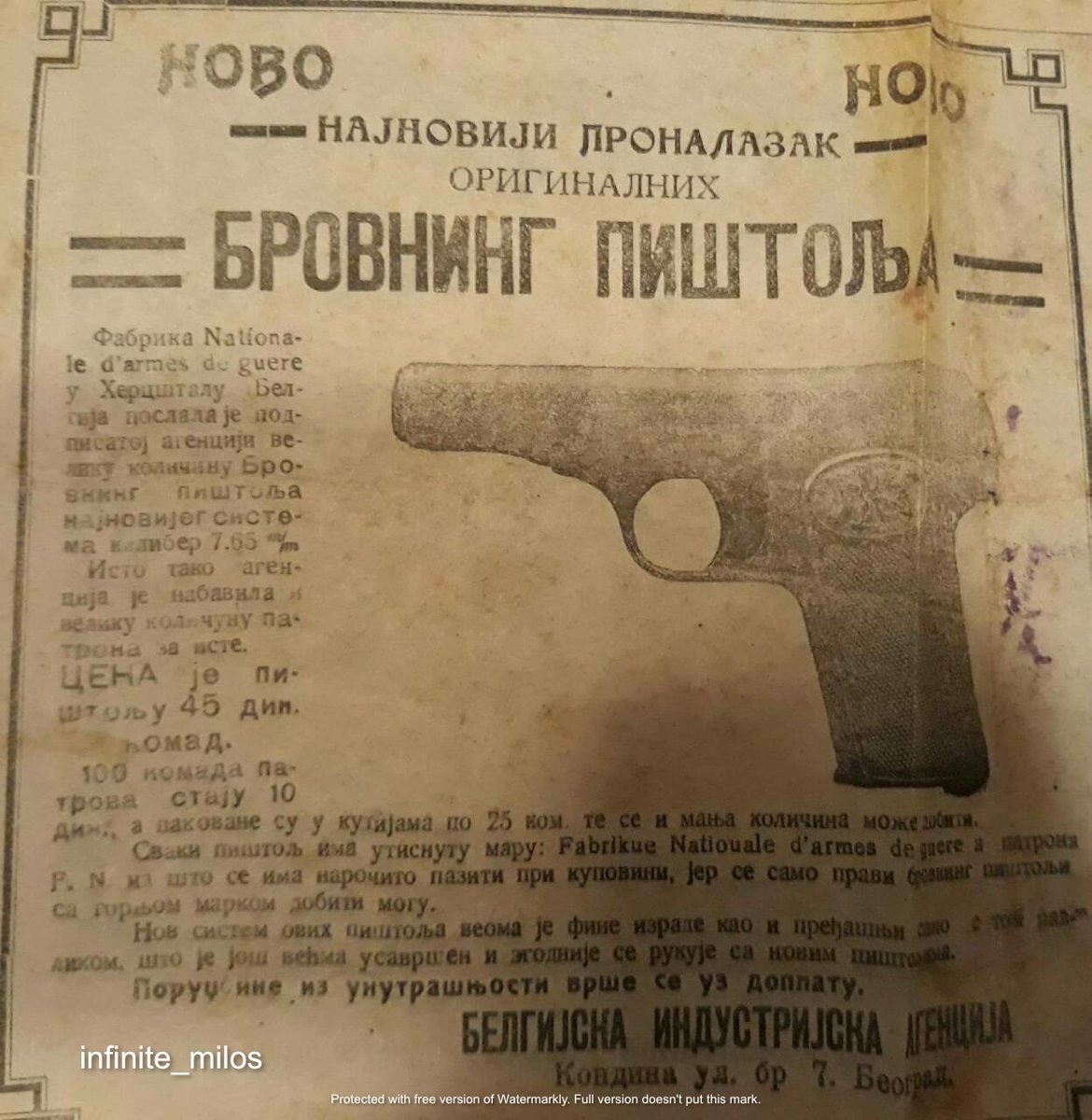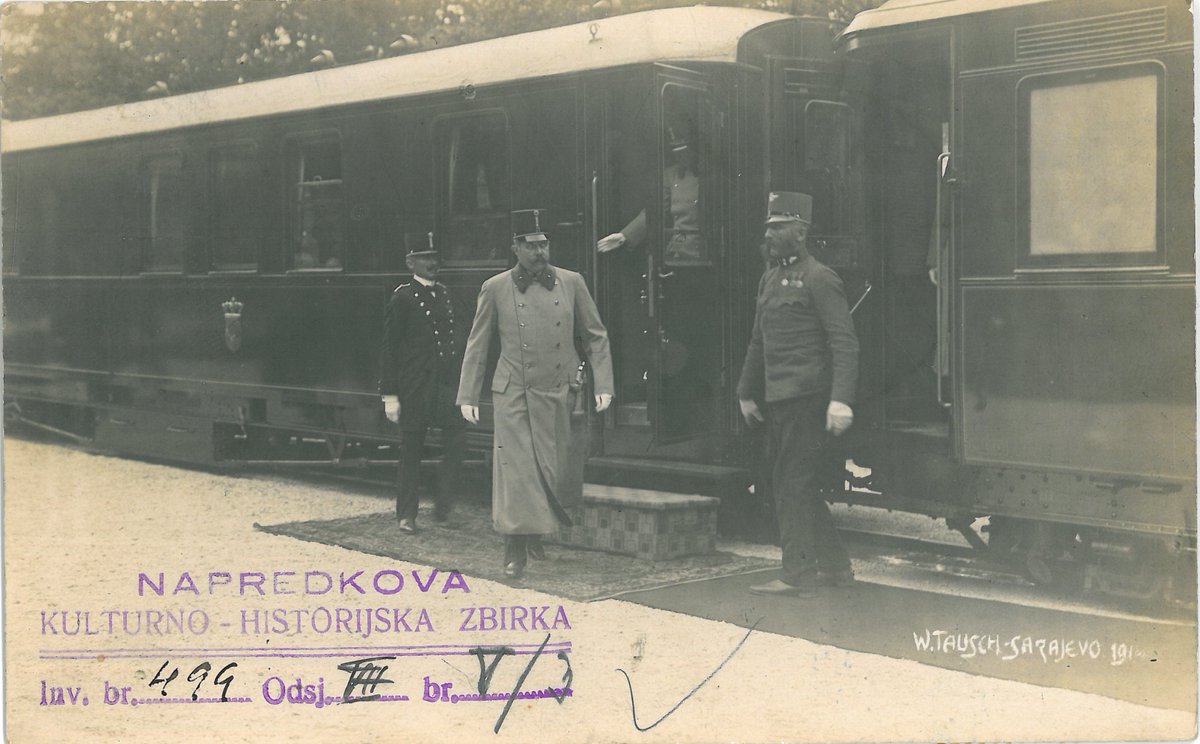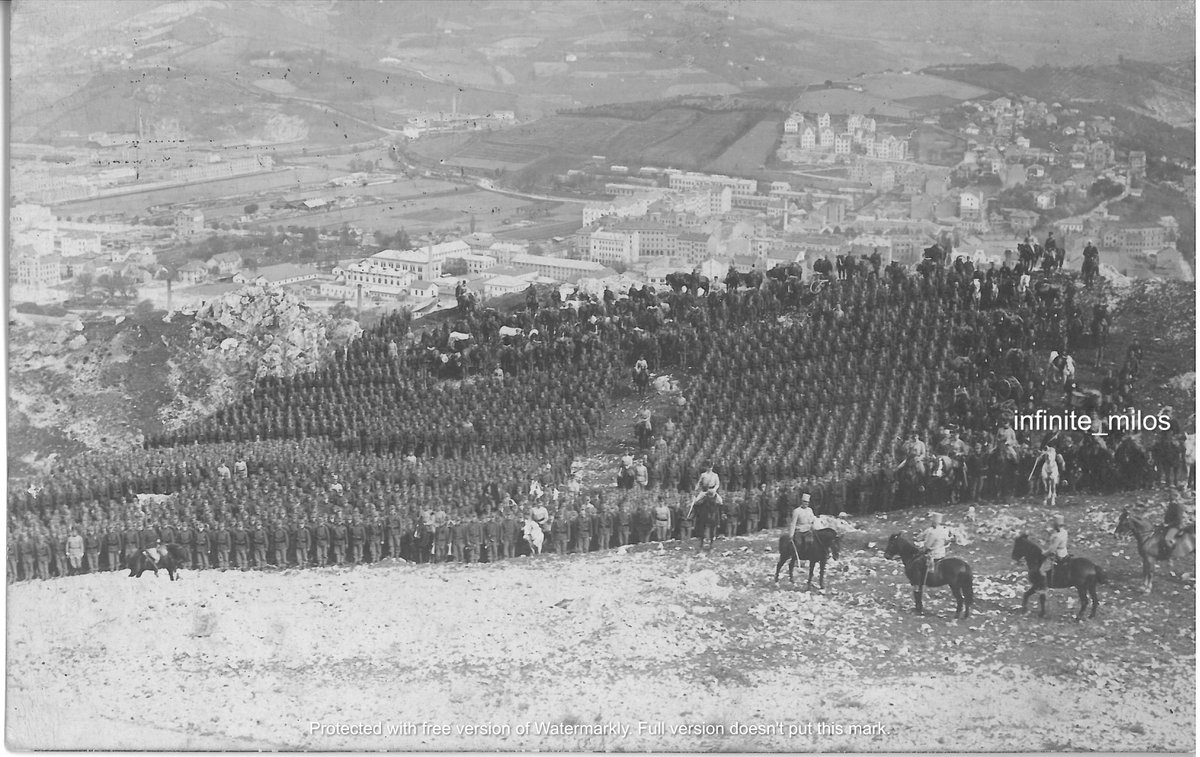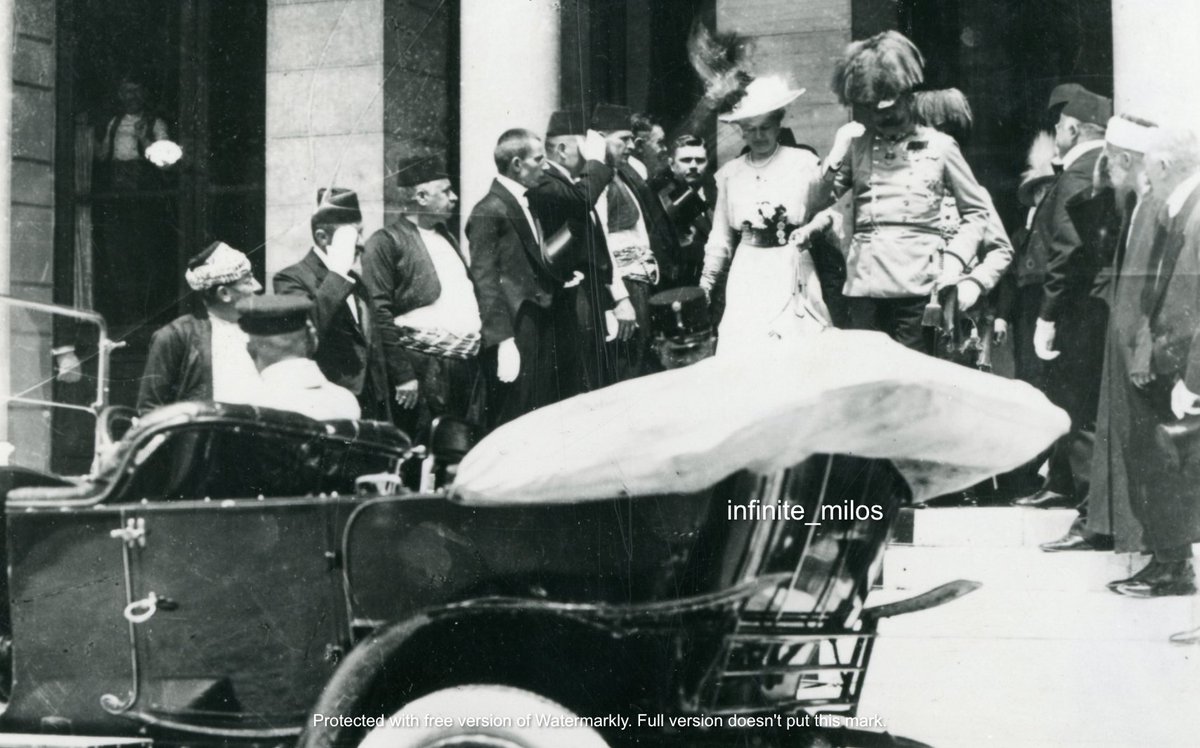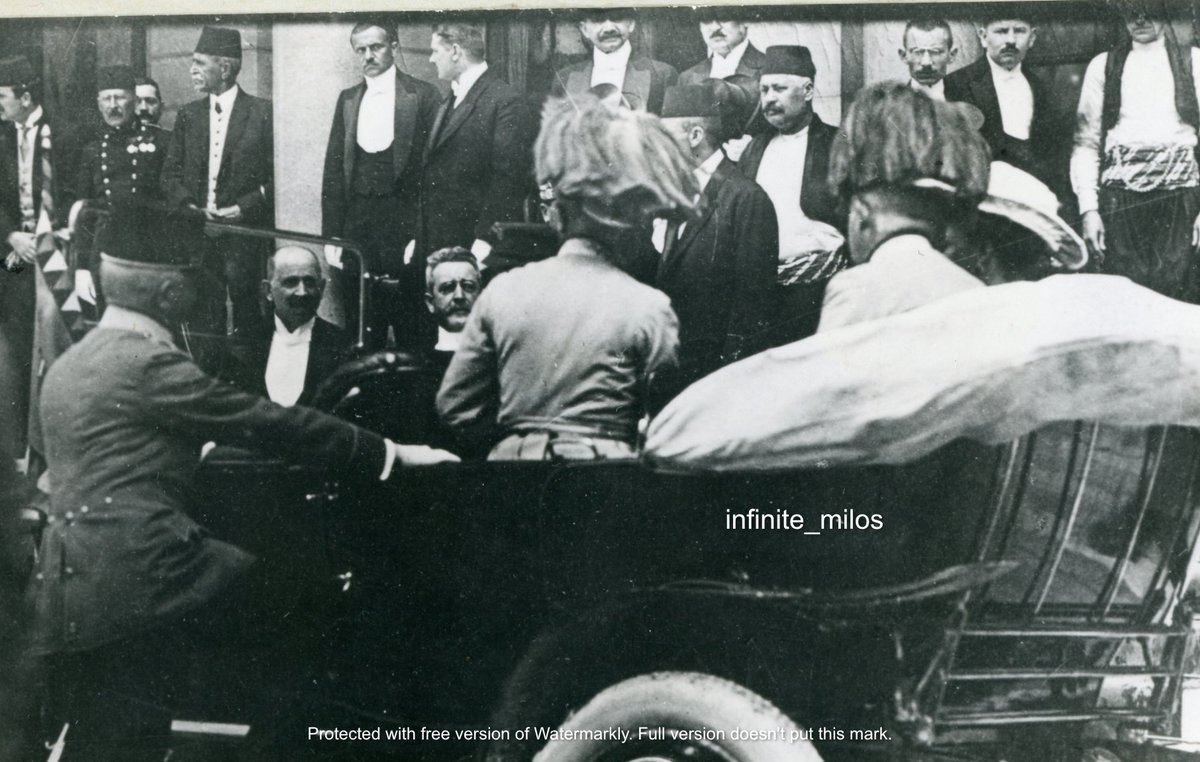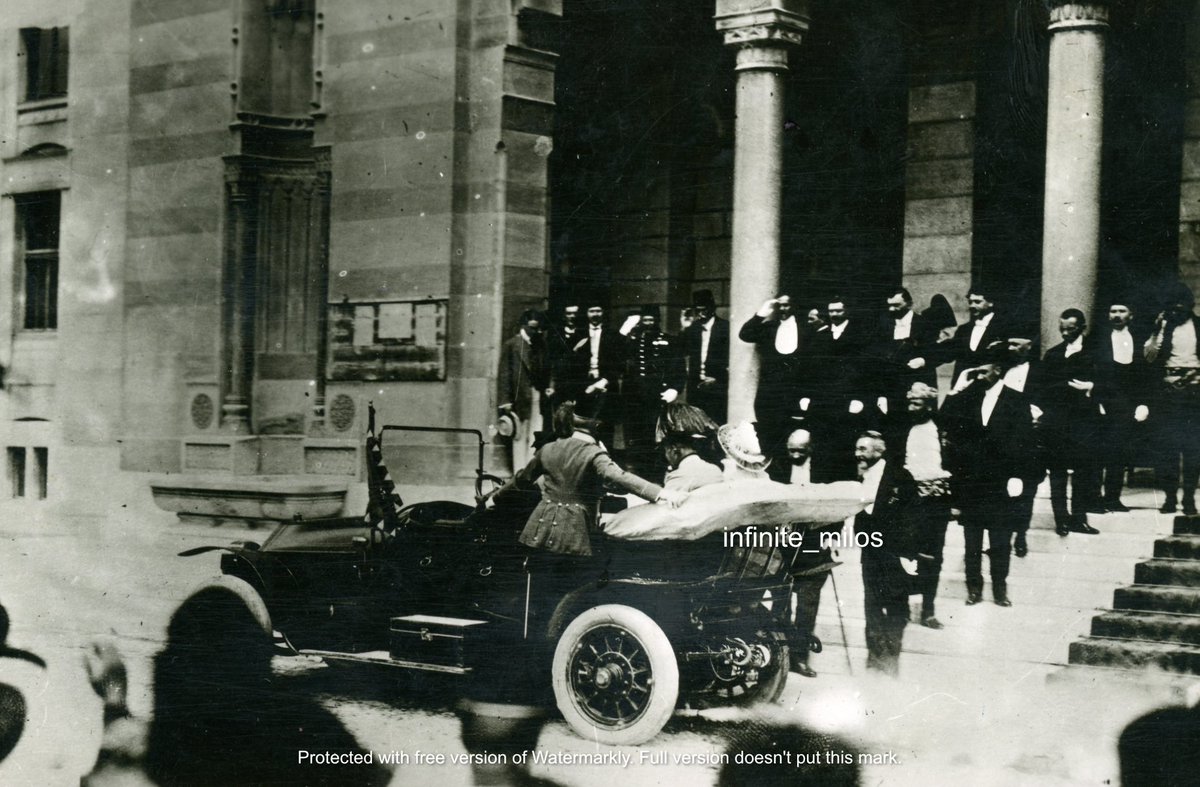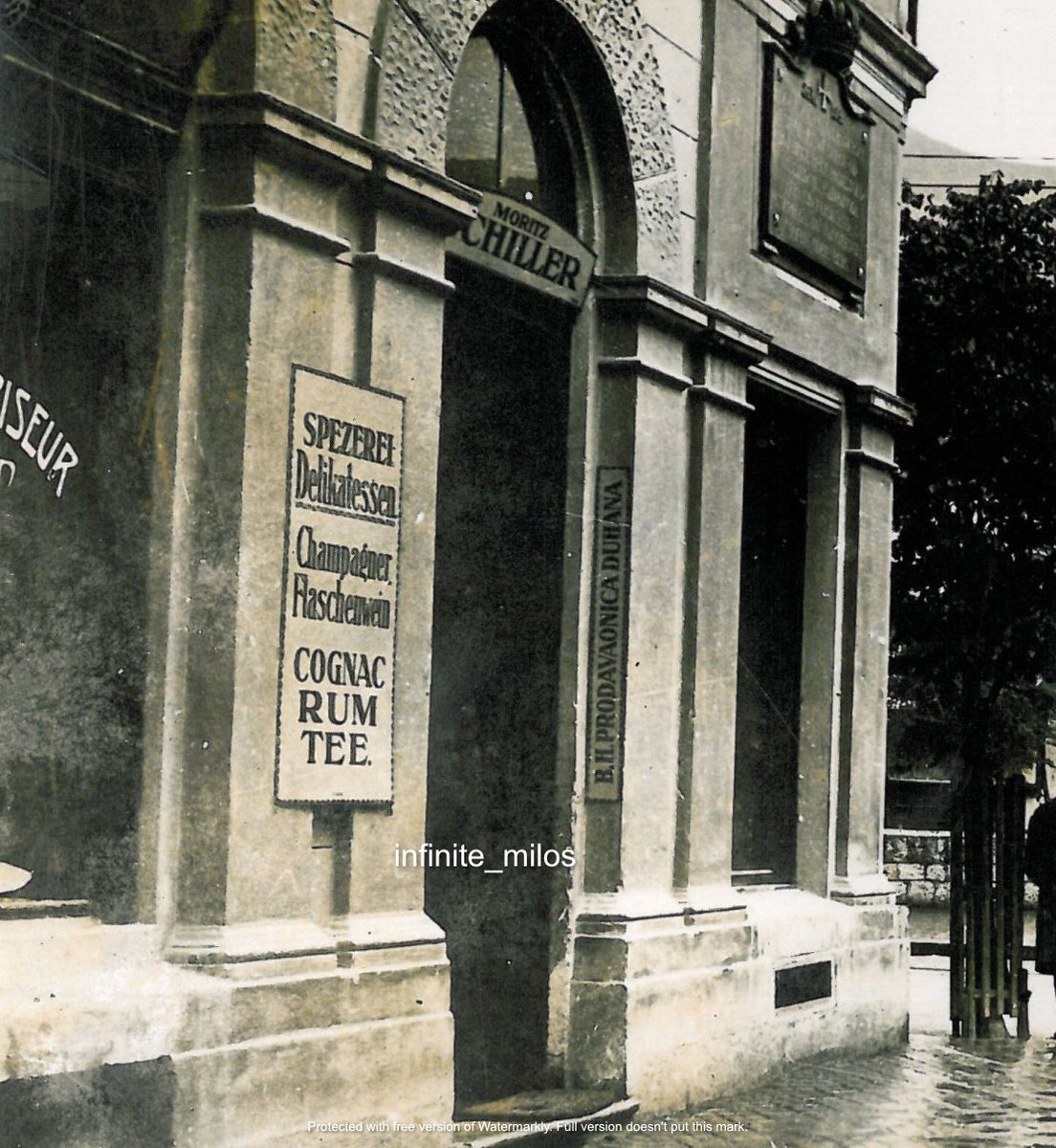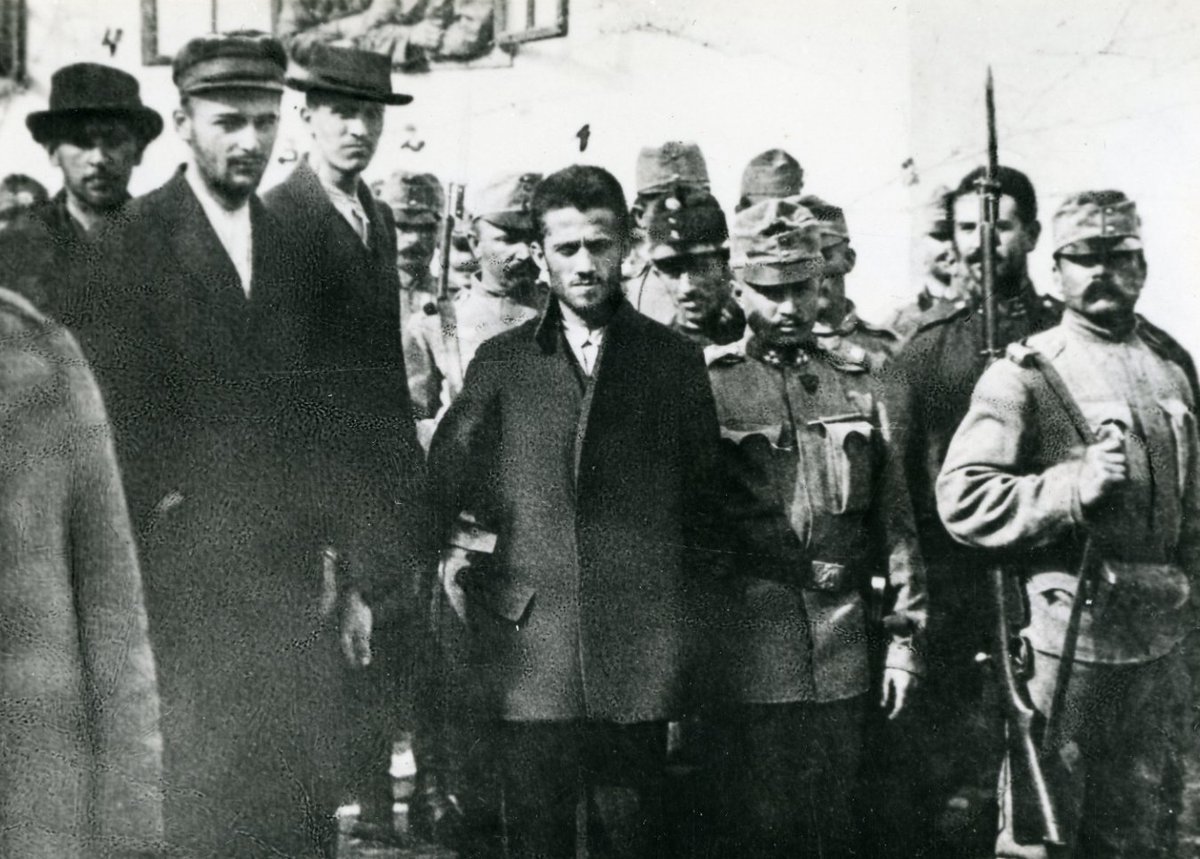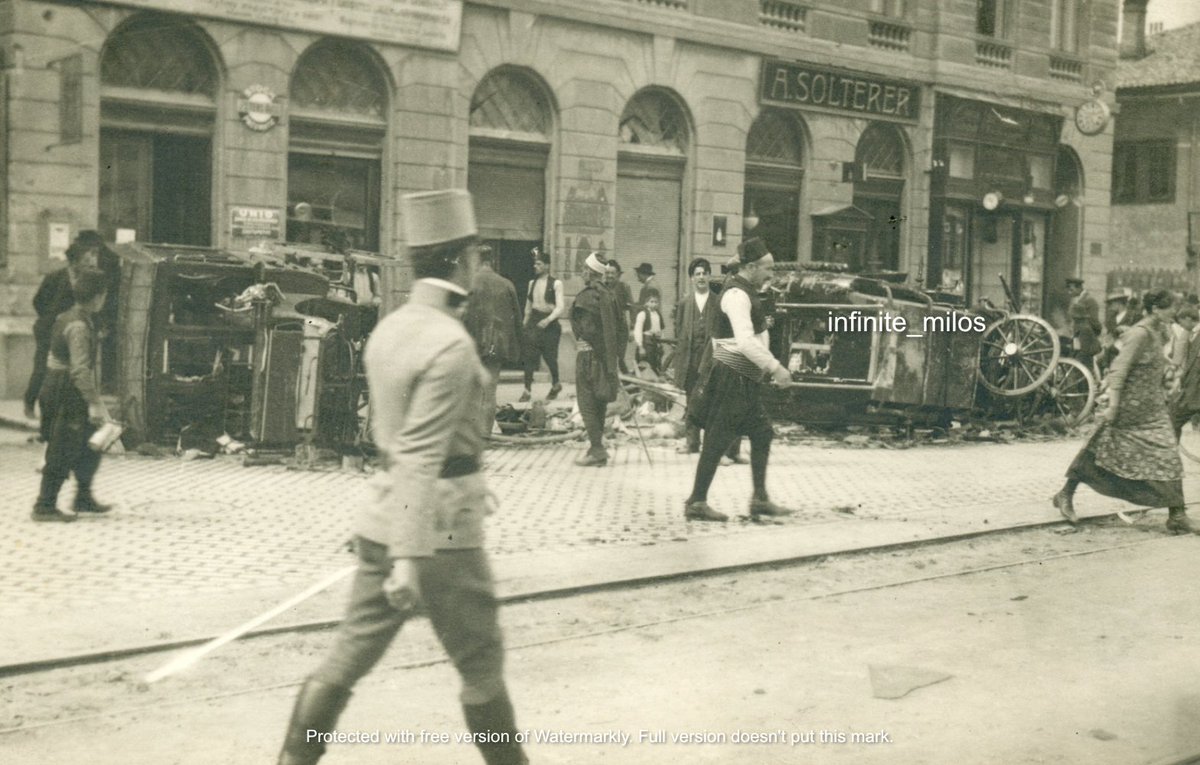Sarajevo Assassination 1914 - what really happened?  https://abs.twimg.com/emoji/v2/... draggable="false" alt="⤵️" title="Nach rechts zeigender Pfeil mit Krümmung nach unten" aria-label="Emoji: Nach rechts zeigender Pfeil mit Krümmung nach unten">
https://abs.twimg.com/emoji/v2/... draggable="false" alt="⤵️" title="Nach rechts zeigender Pfeil mit Krümmung nach unten" aria-label="Emoji: Nach rechts zeigender Pfeil mit Krümmung nach unten">
I will not try to explain why young students from Bosnia opted for violence - I wrote a book about that - I will try to elucidate only what happened in June of 1914.
Bosnian students Gavrilo Princip, Trifko Grabež and Nedeljko Čabrinović decided to assassinate F. Ferdinand.
Bosnian students Gavrilo Princip, Trifko Grabež and Nedeljko Čabrinović decided to assassinate F. Ferdinand.
At that point there is one more individual who knows about the plot. That is Borivoje Jevtić, their friend from Sarajevo, who informed them that the Archduke is coming to Sarajevo by sending this piece from local newspaper to Princip in Belgrade.
Their problem is money - students do not have money to buy weapons. That is why they got in touch with "chetniks", the veterans from the Balkan wars (1912-1913).
In this tavern ("Golden Beluga") in Belgrade they approached Milan Ciganović, a war veteran.
In this tavern ("Golden Beluga") in Belgrade they approached Milan Ciganović, a war veteran.
Left to right: Trifko Grabež, Milan Ciganović, Gavrilo Princip.
Ciganović asked his commander, Vojislav Tankosić, and Tankosić accepted to meet one of the young students.
Ciganović asked his commander, Vojislav Tankosić, and Tankosić accepted to meet one of the young students.
No one of the main conspirators survived the war. So everything we know is deducted from the partial evidence we have.
Short video of Tankosić that survived:
Short video of Tankosić that survived:
Tankosić asked his own superior, lieutenant colonel Dragutin Dimitrijević Apis, what to do.
The only testimony about Apis motivation to support the plan is the report from 1932, written by the good friend of Apis, colonel Dragutin Popović.
The only testimony about Apis motivation to support the plan is the report from 1932, written by the good friend of Apis, colonel Dragutin Popović.
Apis believed that the Austria-Hungary was preparing an attack against Serbia and he thought that the attack against the heir of the Habsburg throne might revert these plans.
The pistols were supplied by the Belgian arms dealer and swordsman living in Belgrade, Charles Doucet
The pistols were supplied by the Belgian arms dealer and swordsman living in Belgrade, Charles Doucet
Princip& #39;s Browning FN 1910 - one of the most modern pistols of the time.
This photo shows the weapons that the police in Sarajevo eventually took from the conspirators.
Apart from Brownings, we can see Serbian made bombs.
Apart from Brownings, we can see Serbian made bombs.
The usual trip from Belgrade to Austria-Hungary went via Zemun, but that was not the option, because Princip& #39;s name was on the list of students that ought to be arrested.
That is why conspirators crossed illegally to Bosnia, across tiny island called Isakovića Ada.
That is why conspirators crossed illegally to Bosnia, across tiny island called Isakovića Ada.
They were helped by the close friend of Apis - major Ljuba Vulović.
Serbian police noticed that something is happening and they immediately reported to the Prime Minister.
Prime Minister Pašić asked Defence Minister Putnik to investigate.
Serbian police noticed that something is happening and they immediately reported to the Prime Minister.
Prime Minister Pašić asked Defence Minister Putnik to investigate.
However, the man Putnik asked to investigate the whole thing was major Vulović himself.
Apis on the far left, Vulović on the far right.
Apis on the far left, Vulović on the far right.
Archduke Franz Ferdinand, the chief inspector of the Habsburg army arrives in Sarajevo to oversee the manoeuvres of the Habsburg armies. (Mostly its XV corps).
Princess Sophie of Hohenberg (archduke& #39;s wife), General Oscar Potiorek and Franz Ferdinand in the centre of the photo.
Numerous authors claimed that the security was lacks. There is no evidence for this.
Numerous authors claimed that the security was lacks. There is no evidence for this.
The chief operative for the conspiracy in Sarajevo was Danilo Ilić. He made all the plans - and that was made easier by the fact that the route of the Archduke& #39;s motorcade was published in the press.
In this photo you can see execution of the death penalty over Ilić.
In this photo you can see execution of the death penalty over Ilić.
Nedeljko Čabrinović made the first attempt. He through a bomb on the motorcade. Given that the bombs were hard to activate at a precise moment, bomb exploded behind Ferdinand& #39;s car and it injured his aide-de-camp
Ferdinand in front of the town hall few minutes after bomb attack
Ferdinand in front of the town hall few minutes after bomb attack
Soon, Ferdinand leaves the town hall. The rest of the visit is canceled and he is headed towards the hospital to visit wounded soldiers.
For security reasons, another officer was added to his car, and he stood on the left side of Ferdinand& #39;s Gräf & Stift automobile.
After the first attempt most of the conspirators went home, they thought that Ferdinand will not come back to the city centre.
Gavrilo Princip went to his favourite coffee shop - Moritz Schiller Delikatessen - and he ordered a pie.
Gavrilo Princip went to his favourite coffee shop - Moritz Schiller Delikatessen - and he ordered a pie.
Judging by the direction of the car (from the town hall alongside the river) and by the minaret of the Emperor& #39;s mosque, we can say that the photographer was standing around 10 meters away from Schiller& #39;s shop and Princip.
The last photo of Franz Ferdinand.
The last photo of Franz Ferdinand.
No one told the driver that the route was changed and he turned towards the Baščaršija, Ferdinand ordered him to stop. He did. Exactly in front of Gavrilo Princip.
The officer who ought to protect the archduke was standing on the wrong (left) side.
The officer who ought to protect the archduke was standing on the wrong (left) side.
Princip fired a couple of rounds.
He hit Ferdinand below the neck and Sofia in the belly.
x on the car shows where the bullet penetrated the car door, before hitting Sofia.
He hit Ferdinand below the neck and Sofia in the belly.
x on the car shows where the bullet penetrated the car door, before hitting Sofia.
The assassins were immediately arrested.
They were seriously beaten up so the most famous photo of Gavrilo Princip does not really shows how he looked like in reality.
They were seriously beaten up so the most famous photo of Gavrilo Princip does not really shows how he looked like in reality.
This photo gives better insight into how Princip actually looked like. It was taken in September of 1914, just before the trial started.
No# 1 is Princip.
No# 1 is Princip.
When it became known that the conspirators were mostly Serbs, attacks on the Serbs in the Sarajevo started.
Main conspirators Princip, Čabrinović and Grabež are under age so they cannot be sentenced to death. However, the Monarchy made sure no one survived.
All three of them died in Theresienstadt prison. Princip was last - he died in April of 1918
All three of them died in Theresienstadt prison. Princip was last - he died in April of 1918
His body was put into an unmarked grave. However, during his funeral, corporal of Czech origin, František Lebl, secretly marked the grave.
After the war on that spot a body with an arm was found.
After the war on that spot a body with an arm was found.
It was Princip - due to improperly healed broken bones his arm was amputated.
Photo of the exhumation
Photo of the exhumation
Soon after the assassination, Austro-Hungarian Foreign Ministry sent Friedrich von Wiesner to Sarajevo, to investigate whether Serbian government was involved in the affair.
Wiesner said that there was no evidence, however, the Ultimatum was already written.
Wiesner said that there was no evidence, however, the Ultimatum was already written.

 Read on Twitter
Read on Twitter